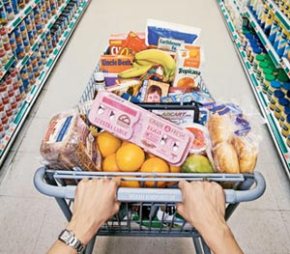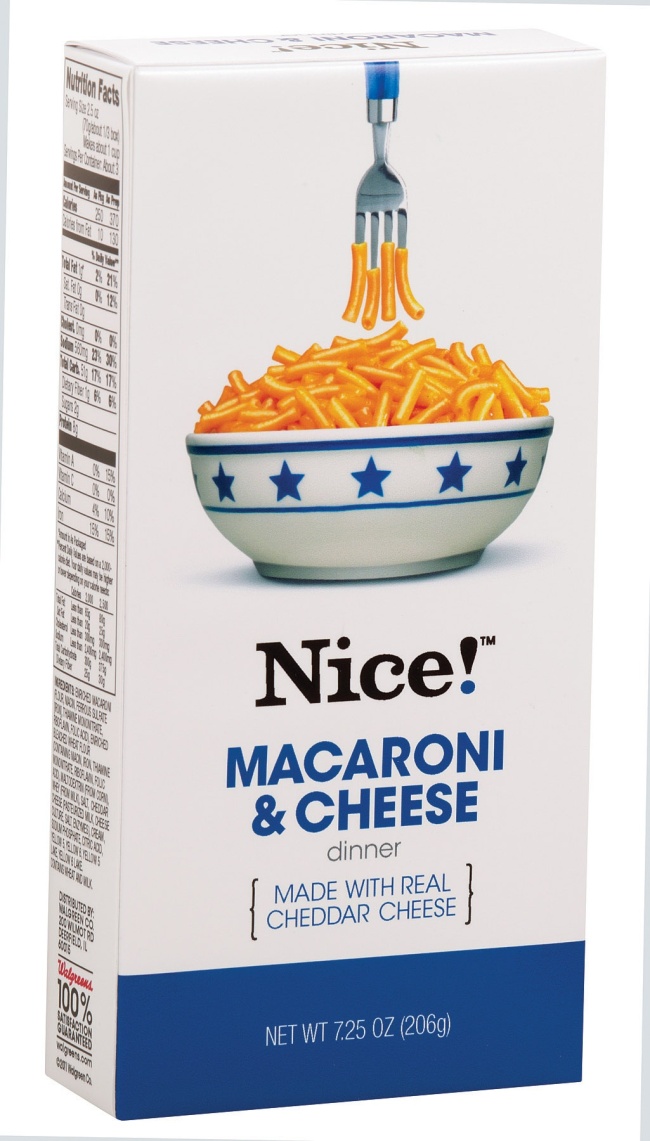Label & Narrow Web Feature: Great Lakes label awarded GMI certification
Snacking From A Clear Package of Food? Studies Say You’ll Eat More of It.
We’ve all heard that our environment affects our food consumption habits. Naturally, we tend to eat more when we’re distracted or even when the weather is colder. Our plate sizes or color can change how much we’re taking in as well. What about packaging? A brightly colored package with

See it clearly? Chances are you’ll eat more of it.
mouth-watering graphics influences our buying decisions, but can packaging really influence how many M&M’s we’re popping? The answer is, yes. According to a recent study published in the American Marketing Association’s Journal of Marketing, conducted by Professor Xiaoyan Deng of Ohio State University’s Fisher College of Business and Professor Raji Srinivasan of McCombs School of Business at the University of Texas in Austin, consumers respond positively to food packaging that gives a clear look at the contents inside as opposed to opaque packaging. The study found that size matters. Study participants ate less of the visually appealing snack food if the snack food was sizable like cookies, and ate more if the snack food was smaller, like pretzels or M&M’s.
So what are the takeaways ?
– Clear packaging or open-window packaging creates visual appeal.
– Size matters. Clear packaging works best for smaller snack foods. When packaging larger contents, retailers should stick to opaque packaging.
read more here.
Related articles
- The main advantages of plastic packaging (ledlightmanufacturer8.wordpress.com)
What’s In Your Shopping Cart? (You Might Be Surprised…)
Narrowly missing a straying child, you steer your heavy shopping cart through an aisle of brightly colored cans, looking in earnest for your favorite brand of chunky tomato sauce. Your cart comes to a screeching halt as you notice your favorite chunky blended sauce is now a little more expensive than you remember. Just as you are about to give up hope you notice a similar blend of sauce to your left. As you pick it you notice that this sauce looks strikingly similar to your usual purchase. You glance down at the price, filled with glee that this particular brand of chunky blend sauce is significantly cheaper. Without a moment’s hesitation you place it in your shopping cart along side the other private label brands that are beginning to outnumber the flashy name brand items.
If you’re like most Americans, this story may seem all too familiar to you. According to a recent Market Force study, 96 percent of consumers are buying private label grocery store brands. It wasn’t too long ago that store brands were looked down upon for being “low quality” and “cheap” however, many big box stores have adopted a new marketing strategy to their private label brands to create wide appeal for these otherwise ignored products. In 2011 Walgreen’s unveiled their high quality brand Nice!™. Their strategy was to focus on quality and improve the shopping experience, attracting consumers of all income levels. Stores like Home Depot and Target have also enhanced their own private label brands positioning them in a way that is synonymous with both quality and value.
While the recent economy may have played a factor in the rise of the private label, quality packaging and branding has played a large role as well. Stunning colors, clever designs, and an overall clean look increasingly found on more private label brands will continue to attract more consumers, making private label brands become the “new normal”.
Related articles
- Lower Your Summer Grocery Bill Buying Store Brands (turbotax.intuit.com)
- Keys To Private Label Greatness (emergefromthepack.com)
Doubling Happiness: Innovative Packaging and the Sharing Model
Coca-Cola is doing it. Stacy’s Pita Chips is doing it, and Orville Redenbacher has been doing it for a while. “Out-to-share” packaging design, adopted by the brands above, have appealed to their consumers’ desire to connect with others through sharing. From pop cans that spilt in half, to chip bags that transform into party bowls, ready to share packaging solutions are expected to be ubiquitous in kitchens and markets everywhere. In fact, an estimated 89% of consumers are expected to use more product with out-to-share packaging versus a product with traditional packaging.
While easy to share goods are a win for the consumer, brands have a valuable opportunity to engage with their consumers throughout their consumption experience.
What Your Font Choice Is Saying About You
Interesting post!
Type is everywhere, including right in front of you. We see it all the time, and you may think you don’t pay attention to it. All words look the same right? Wrong. The fonts we see, in signage, presentations, packaging, texts, influence us in subtle ways.
Take Elon Musk‘s ‘fifth mode’ of transportation, the Hyperloop, an alternative to boats, planes, automobiles and trains. According to Musk (founder of Paypal and Tesla, the electric car company), you would be able to travel from downtown Los Angeles to downtown San Francisco in under 30 minutes, or 343 miles at more than 685 mph by Hyperloop. That’s more than twice as fast as the world’s fastest train.
To date Musk has only talked about the idea. But it’s been graphically immortalized by ‘Tinker’ John Gardi. Unfortunately he used Comic Sans.
It’s very informative. Indeed Musk has confirmed it as a close representation of his original idea…
View original post 312 more words
Engaging Labels – Exploiting New Opportunities
Social networking and information technology is transforming our traditional spaces daily. From using Skype to communicate to a friend abroad in China, or tweeting our favorite celebrity, how we utilize social technology is effectively changing how we view the world. Businesses have used these opportunities to engage with their consumers, sparking conversations about brand experience and even customer service. Most consumers are familiar with platforms like Facebook, Twitter and engaging blog posts, where like minded consumers can share their experiences about the brand or voice a complaint. While these platforms are tried and true ways to engage with consumers, many companies are utilizing prime real estate outside of the online realm.
QR or quick response codes have seen a surge in popularity. These codes are used by marketers to hold the attention of their consumers as well as inform. While some of these QR codes merely take the consumer to the company’s corporate website, some brands are utilizing these QR codes to add true value to their consumer’s brand experience such as ready to use coupons and deals and even nutrition facts in the case of McDonald’s.
QR codes are not without risk. According to Carol Houghton of Labels and Labeling, sloppy QR codes with broken links, “Can damage a brand; it needs to be a gateway to a valuable and virtual world with recipes, games, competitions and giveaways.”
Brands have a great opportunity to invite their consumers to a unique virtual experience and shape the future of engaging packaging, if executed properly. For tips on execution and QR code do’s and dont’s, check out “QR Codes Best Practices” here.
photo courtesy of: http://www.bangkokpost.com






Recent Comments